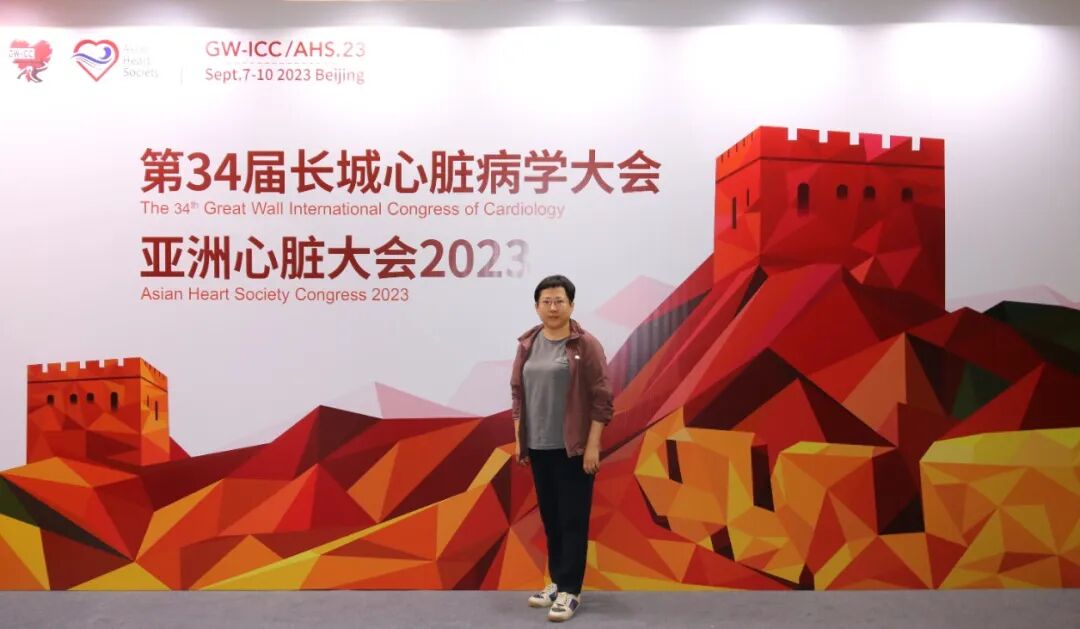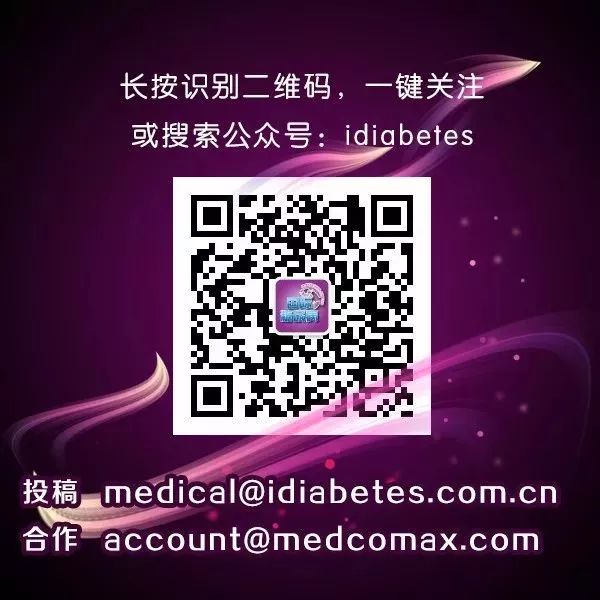Editor’s Note
Sodium-glucose co-transporter 2 inhibitors (SGLT2i) are a new class of oral hypoglycemic agents that primarily function by blocking the SGLT-2 transport protein in the proximal renal tubule, thereby promoting the excretion of glucose and sodium in urine.With the publication of cardiovascular outcome studies for these drugs, their cardiovascular benefits have been well established.Another class of prominent hypoglycemic agents, glucagon-like peptide-1 receptor agonists (GLP-1RA), can lower blood sugar and promote weight loss, with cardiovascular outcome studies also demonstrating cardiovascular benefits.The latest 2023 ESC guidelines provide the highest level of recommendation for both classes of drugs to reduce the risk of cardiovascular events or heart failure hospitalizations in patients with type 2 diabetes (T2DM) and cardiovascular disease.


Recently, at the 34th Great Wall Cardiovascular Conference (GW-ICC 2023), the journal “International Diabetes” had the honor of inviting Professor Yu Miao from Peking Union Medical College Hospital to discuss the mechanisms of action and cardiovascular benefits of SGLT2i/GLP-1RA. Here are the key points for readers.

Patients with T2DM in our country often have multiple metabolic abnormalities and a high risk of cardiovascular disease. What aspects do you mainly consider when choosing the optimal hypoglycemic regimen in clinical practice?
Professor Yu Miao
Clinical decisions regarding hypoglycemic treatment must comprehensively consider the efficacy, safety, tolerability, accessibility, and affordability of medications. Efficacy includes blood sugar reduction, weight loss, and the reduction of cardiovascular and renal disease risks. Diabetic patients are at high risk for cardiorenal syndrome, with ASCVD, heart failure, and chronic kidney damage being the main causes of mortality and disability in diabetic patients. Managing cardiorenal risks helps improve patient prognosis. The 2023 ADA/EASD guidelines clearly state that for patients at high risk for cardiorenal complications, evidence-based hypoglycemic medications should be selected to reduce cardiorenal risks; for other patients, both blood sugar and weight management should be achieved.

The status of SGLT2i and GLP-1RA in guidelines in China and the US is rapidly improving. Could you elaborate on the specific recommendations for SGLT2i and GLP-1RA in the recently published “2023 European Society of Cardiology (ESC) Guidelines for the Management of Cardiovascular Disease in Patients with T2DM” (referred to as the guidelines)?
Professor Yu Miao
The 2023 ESC guidelines recommend cardiovascular risk stratification for T2DM patients based on atherosclerotic cardiovascular disease (ASCVD)/severe target organ damage and SCORE2-Diabetes assessment of 10-year cardiovascular disease risk, and then recommend treatment plans according to different cardiovascular disease risks. Based on evidence, different hypoglycemic medications are classified into Class I, IIa, IIb, and III, corresponding to recommended, to be considered, may be considered, and not recommended, respectively. For T2DM patients with very high risk of ASCVD, the guidelines classify both SGLT2i and GLP-1RA as Class I; for T2DM patients with heart failure, SGLT2i and/or GLP-1RA are also classified as Class I recommendations, indicating high-quality evidence of their benefits. For high-risk cardiovascular patients without ASCVD, SGLT2i and/or GLP-1RA are classified as Class IIb. In summary, if a diagnosis of ASCVD is confirmed or if there are multiple cardiovascular risk factors, the guidelines recommend SGLT2i or GLP-1RA with evidence of cardiovascular benefits to reduce cardiovascular risk, independent of their hypoglycemic effects; if the T2DM patient has heart failure, including heart failure with preserved ejection fraction (HFpEF), heart failure with mid-range ejection fraction (HFmrEF), and heart failure with reduced ejection fraction (HFrEF), SGLT2i with evidence of heart failure benefits is recommended to reduce the risk of heart failure hospitalization; if the T2DM patient has chronic kidney disease (CKD), SGLT2i with evidence of renal benefits is recommended to reduce the risk of renal failure and cardiovascular risk, and if not tolerated or contraindicated, GLP-1RA with evidence of cardiovascular benefits may be considered.

SGLT2i and GLP-1RA can manage various metabolic factors in addition to lowering blood sugar to reduce cardiovascular risk. Could you discuss the advantages of the mechanisms of action of these two classes of drugs? Do drugs with similar mechanisms have class effects and provide the same cardiovascular protective effects?
Professor Yu Miao
The advantages of the mechanism of action of SGLT2i are mainly reflected in several aspects: ① The primary mechanisms of SGLT2i are glucose excretion, sodium excretion, and diuresis, which in turn lead to blood sugar reduction, weight loss, decreased interstitial sodium load, and blood volume, without activating the sympathetic system, and can increase angiotensin 1-7; ② SGLT2i can lower blood pressure and blood uric acid levels; ③ Increasing evidence shows that SGLT2i can improve myocardial energy supply under heart failure conditions; and improve myocardial hypoxia through hypoxia-inducible factor (HIF-1α) and erythropoietin (EPO) pathways; ④ There is also evidence that SGLT2i has anti-inflammatory effects, can regulate autophagy function and iron metabolism, and improve mitochondrial function in myocardial cells.GLP-1RA has demonstrated a comprehensive anti-atherosclerotic effect in basic and clinical research, from endothelial dysfunction to platelet aggregation and thrombus formation, with anti-inflammatory, vasodilatory, and sympathetic inhibition effects, and can also improve myocardial mitochondrial function, enhance myocardial energy metabolism, and reduce oxidative stress, alleviating myocardial ischemia-reperfusion injury. GLP-1RA has a more pronounced effect on weight loss through appetite suppression and increased satiety. There is also evidence that GLP-1RA benefits metabolic fatty liver disease (MAFLD) and cognitive dysfunction. These benefits are advantageous for reducing cardiovascular risk.There are class effects in the mechanisms of action of SGLT2i and GLP-1RA in improving metabolism and cardiorenal benefits, but their cardiovascular outcome study results are not entirely consistent. Current evidence indicates that SGLT2i provides class effects in heart failure, with each SGLT2i reducing the risk of heart failure hospitalization by 30% to 35%, but the benefits regarding major adverse cardiovascular events (MACE) vary. Similarly, the results of each GLP-1RA regarding the primary endpoint of MACE in cardiovascular outcome trials (CVOT) are inconsistent. The reasons for these differences remain to be further analyzed. In the 2023 ESC guidelines, Class I refers to SGLT2i and/or GLP-1RA with clear evidence of cardiovascular benefits.

Both SGLT2i and GLP-1RA have cardiovascular benefits; do they each have their own focus? What strong supporting evidence is there? What is the future development outlook?
Professor Yu Miao
As previously summarized, the mechanisms of cardiovascular benefits of the two classes of drugs each have their focus: SGLT2i primarily improves cardiac pump function, while GLP-1RA mainly addresses atherosclerosis. CVOTs, heart failure outcome studies, and renal outcome studies provide solid evidence that SGLT2i reduces heart failure and renal risks, benefiting both diabetic and non-diabetic patients, thus changing the treatment landscape for heart failure from the “golden triangle” to the “new quadruple therapy”; in the field of chronic kidney disease, it is seen as the “second revolution” after RAS antagonists. The recently published SELECT study shows that semaglutide 2.4 mg (once weekly, subcutaneously) significantly reduces the risk of MACE by 20% in overweight or obese patients, further providing evidence for the anti-atherosclerotic and anti-inflammatory effects of GLP-1RA, which is also a future direction.What is the future development outlook for SGLT2i and GLP-1RA? Currently, guidelines provide the highest level of recommendation for both classes of drugs based on evidence. In patients with very high cardiovascular risk and T2DM, if there are no contraindications or intolerances, SGLT2i or GLP-1RA should be prioritized, and they can be used in combination if blood sugar is not adequately controlled; for other T2DM patients, both SGLT2i and GLP-1RA can effectively lower blood sugar, have a low risk of hypoglycemia, and can effectively manage weight.Currently, SGLT2i has been recommended as the first-line medication for HFpEF patients in guidelines, and more evidence will support its benefits in heart failure and explore mechanisms, believing that the position of SGLT2i in the field of heart failure will be solidified and further enhanced. Based on the cardiovascular benefit evidence generated in overweight/obese non-diabetic patients, GLP-1RA has broad application prospects in this population. GLP-1RA also has great potential in reducing stroke risk and improving MAFLD and cognitive dysfunction.

Domestic companies like Heng Rui are gradually enriching their endocrine product lines, such as SGLT2i and the developing GLP-1RA. As the first independently developed SGLT2i, Henggliang has entered the national medical insurance directory and is used nationwide. To better serve patients, could you provide some valuable suggestions?
Professor Yu Miao
Domestic original research drugs have certain advantages in terms of drug accessibility and affordability. The inclusion of Henggliang in the national medical insurance directory provides a guarantee for its clinical application. It is recommended to conduct post-marketing real-world studies to generate real-world evidence regarding hypoglycemic efficacy, routine safety, cardiorenal outcomes, or major adverse health outcomes. Additionally, investigator-initiated basic and clinical research can be conducted to explore its effects on cardiovascular and renal aspects, verify and enrich the understanding of the mechanisms of cardiorenal benefits, and thus assist clinical practice to better serve patients.

Summary
With the continuous evolution of treatment concepts, the current treatment of diabetes must consider blood sugar control, weight loss, and cardiorenal benefits. SGLT2i and GLP-1RA are powerful tools for managing cardiovascular and renal risks in diabetic patients. Their mechanisms of action each have their focus: SGLT2i primarily adjusts hemodynamics and improves myocardial energy/oxygen supply, while GLP-1RA mainly exerts anti-atherosclerotic effects. Currently, guidelines provide the highest level of recommendation for both classes of drugs based on evidence. In patients with very high cardiovascular risk and T2DM, if there are no contraindications or intolerances, SGLT2i or GLP-1RA should be prioritized, and they can be used in combination if blood sugar is not adequately controlled; for other T2DM patients, both SGLT2i and GLP-1RA can effectively lower blood sugar, have a low risk of hypoglycemia, and can effectively manage weight. In the future, the position of SGLT2i in the field of heart failure will be solidified and further enhanced; GLP-1RA has great potential in managing cardiovascular risks in overweight/obese patients, reducing stroke risk, and improving MAFLD and cognitive dysfunction.


Disclaimer:This article is for the reference of healthcare professionals to understand the latest pharmaceutical information and does not represent the views of this platform. This information cannot replace professional medical guidance in any way and should not be considered as medical advice. If this information is used for purposes other than information, the site and the author bear no related responsibility. The latest “International Diabetes” reader-exclusive WeChat group has been established, join us quickly! Scan the QR code of the “International Diabetes” assistant on the left (WeChat ID: guojitnb), reply “International Diabetes Reader”, and they will quickly add you to the group!
The latest “International Diabetes” reader-exclusive WeChat group has been established, join us quickly! Scan the QR code of the “International Diabetes” assistant on the left (WeChat ID: guojitnb), reply “International Diabetes Reader”, and they will quickly add you to the group!

(Source: “International Diabetes” Editorial Department)
Copyright Statement
Copyright belongs to “International Diabetes”. Personal forwarding and sharing are welcome. Any other media or website is prohibited from reprinting without authorization.



Share

Save

Like

View